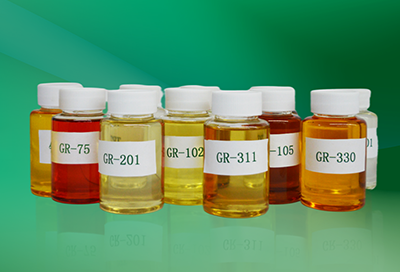Several key points about the application of titanate coupling agent
Release Date:
2021-06-21
Titanate coupling agent is a bridge agent that connects organic and inorganic materials. If it is used improperly in application, it will not have a good effect. The problems that need to be paid attention to during its use are explained as follows:
The usual addition amount of titanate coupling agent. When dealing with powder, it is determined by the total amount of filler, pigment and other inorganic auxiliary materials, as well as the particle size fineness, specific surface area, soft products and hard products of the powder. The empirical dosage is 0.5~3.0, and finally the optimal dosage is determined by the efficiency.
A titanate coupling agent modified powder on the choice of equipment
Equipment requirements: SLG 3/300 powder surface modification machine, high-speed mixer, etc. If a high-speed mixer is selected, the rotating speed is more than 1000r/min, and the volume is 200 ~ 500L. Under the high-speed rotation of the powder material, the powder rotates in the mixing chamber, and the high-speed rotating material stream collides with the baffle plate to change the flow direction, thus strengthening the material mixing and dispersion effect, making the aggregated powder fully dispersed, and the coupling agent coating a layer of molecular film on the interface of each powder particle, high-speed mixer is a very important factor for coupling agent modified powder. The general process of powder filler modification can put the powder filler into the high-speed mixer in an amount of 50% ~ 75% of the volume of the high-speed mixer. When the temperature reaches 90~100 ℃ under high-speed stirring (frictional heat generation), water vapor is discharged, then the measured and prepared coupling agent dilution solution is added, and when the temperature reaches 105 ℃, the powder filler is stopped and discharged for use (closed packaging to prevent moisture absorption). The whole process time depends on the performance of the high-mixing machine

II. The reaction of the water content of inorganic powder materials to the coupling agent
If fatty acid monoalkoxy titanate (VK such as CS-101 105 130) is selected, the water content of the filler should be less than 0.5, otherwise the monoalkoxy titanate coupling agent is easy to hydrolyze and fail. Fillers with high moisture content, such as clay, mica, talc, etc., can be selected as pyrophosphoric acid type titanate coupling agent. In addition to reacting with hydroxyl groups on the surface of the filler to form coupling, pyrophosphate groups (such as CS-201) can also be decomposed to form phosphate ester combined with a part of water. For water-containing polymer systems with high moisture fillers, such as wet-process SiO2, clay, talc, aluminum silicate, water-treated glass fiber, carbon black, phthalocyanine and iron red in aqueous solution to disperse and prevent sedimentation, chelate titanate coupling agent CS-311 or CS-311W with excellent hydrolytic stability can be selected.
Three: add coupling agent and other additives to pay attention to the problem
Titanate coupling agents will react with ester plasticizers and other ester compounds to varying degrees. In this case, a coordinated titanate coupling agent can be used. Generally, surfactants will affect or resist the coupling effect of titanate coupling agent and inorganic filler, such as zinc oxide, stearic acid, etc. These materials must be added after the filler, coupling agent and polymer are fully mixed, so as not to affect the coupling effect. The main thing is to pay attention to some surfactant problems.
Four: processing methods
Usually the pretreatment method (inorganic powder direct treatment method) is better than the direct addition method, and the dosage is relatively less, only one more process. The inorganic filler, pigment first coupling agent modification treatment, and then polymer and other additives processing and mixing, its advantage is suitable for polymer components more complex engineering plastics blending modification or plastic alloy system, as well as some high processing temperature engineering plastics, can prevent unnecessary side reactions. Specific pretreatment method: wet, dry two kinds of mixed method. Wet mixing method, single alkoxy type, coordination type coupling agent, available gasoline, benzene, ethanol and other solvents to dilute and then mix evenly with the filler, and then use heating or decompression and other methods to remove the solvent. This method is quite complete, but it is too costly and uneconomical. The pyrophosphate coupling agent can be added together with the lubricant white oil dilution in the formula; the chelate coupling agent has good water resistance and can be diluted with water. If it is not dissolved in water, it can be dissolved in water with the aid of amine additives, etc., and then mixed with plastics and pigments to remove water. Dry mixing method, the use of titanate coupling agent in plastics mainly by dry method. In order to make a small amount of titanate coupling agent evenly coated on the surface of fillers and pigments, a small amount of diluent is generally added (the amount of anhydrous solvent and coupling agent is 1: 1).
Related News
The main functions of coupling agents
2025-07-04



